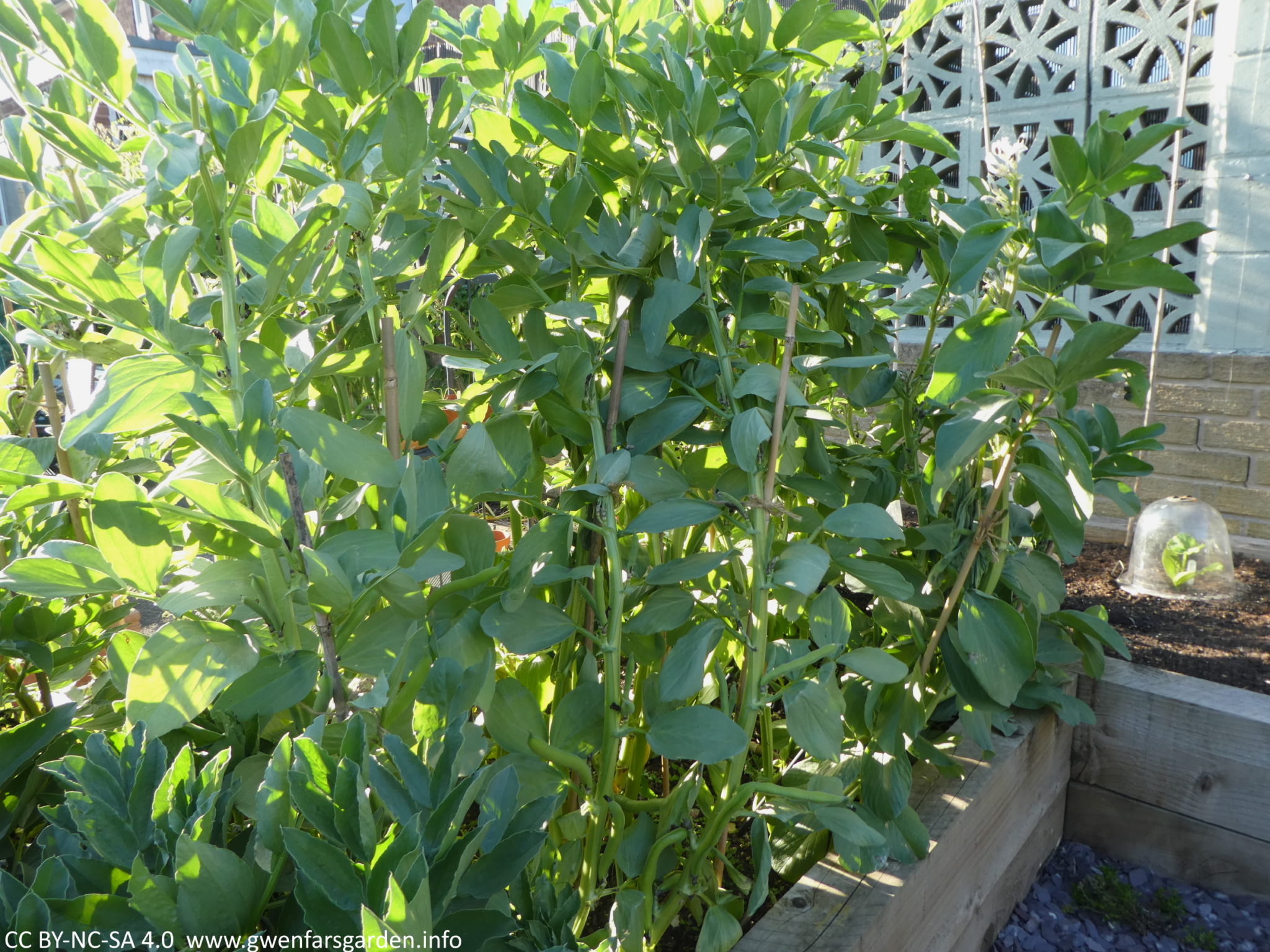
It’s the time of year to start planning those broad bean meals, as the first crops should be ready to harvest soon. However, just before the broad beans are ready for eating, also happens to be the exact same time that the dreaded Blackfly (black bean aphid – Aphis fabae) decide to make an appearance. They suck out all the goodness from the plant and can destroy much of your crop if you don’t get them under control.
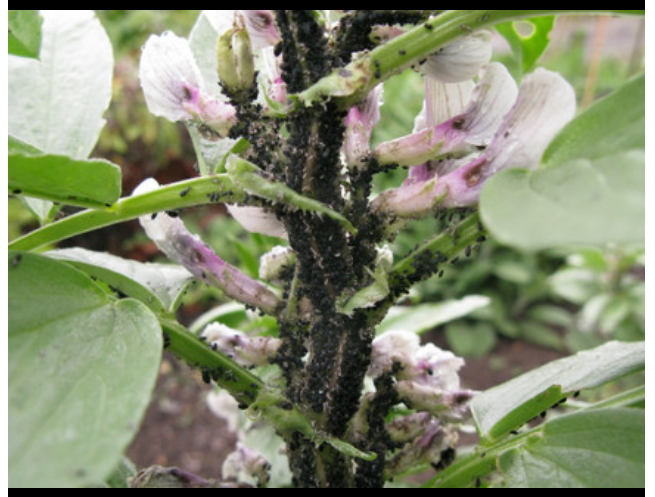
Images: Left – The Vegetable and Herb Expert (2002), Right – RHS website.
The blackfly head for the tips of the broad beans first, as per the picture on the left, and an example of a bad infestation is on the right. It can take only a couple of days to go from just appearing, to a bad infestation, which can destroy the flowers before they even turn into beans.
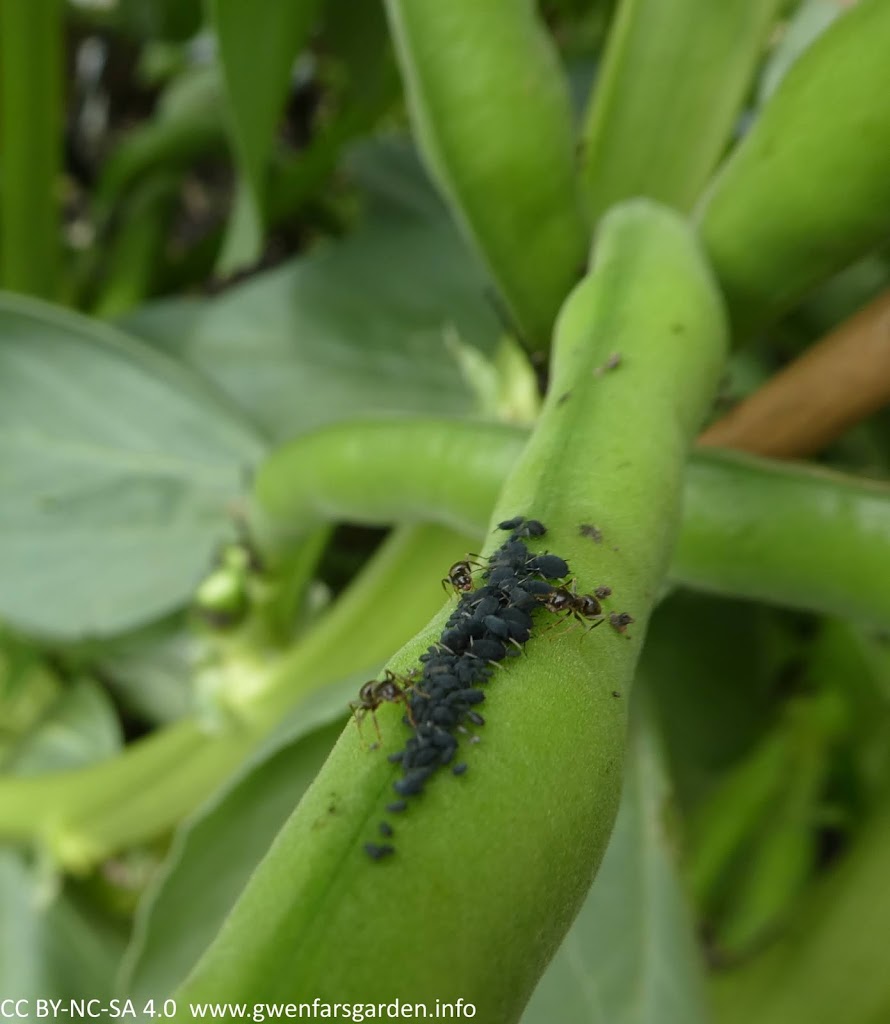
If you notice that you have ants going up and down your beans, that’s because they are also getting read for them. Ants ‘farm’ them (photo above) and can make an infestation so much worse. These are my tips for getting ahead of the blackfly.
Pinching out the tips
The first tip, is to pinch out the tips of the broad beans. This is because this is where the blackfly will land and start their infestation. By taking out the tips, you are opening up the top of the plant to more light and air, making it a little harder for them to take over.
You want to do this once the plants look like they are a decent size and have plenty of flowers on them. This is usually around early-mid May, but can depend on when you sowed them. Earlier May if you sowed in Autumn, later May if the sowing was done in Spring.
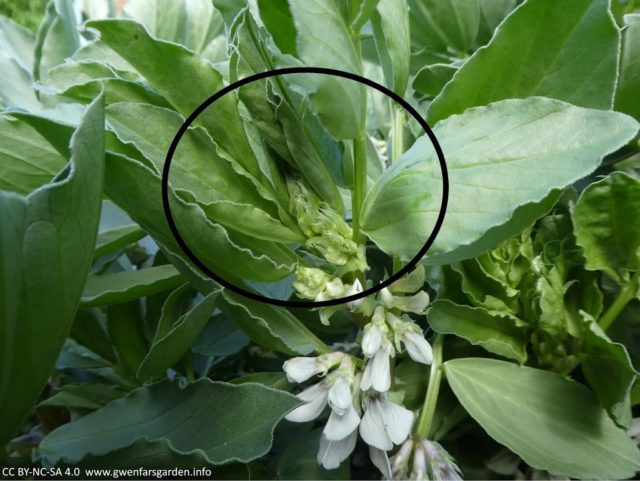
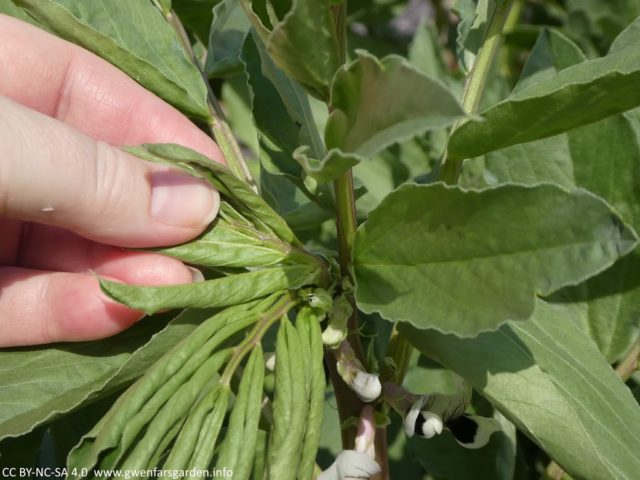
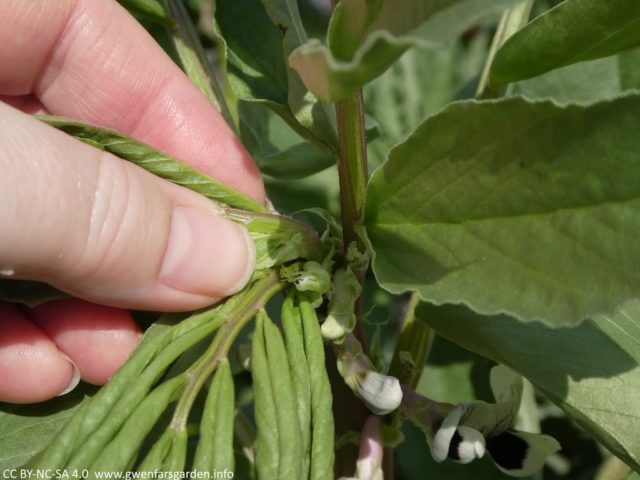
Closer in, you can see I’m going to take out the whole tip.
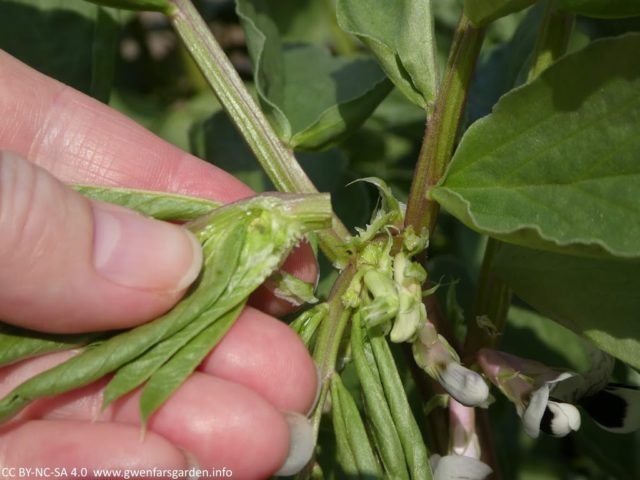
Remember, the tips are edible and you can add them to salad or a stir fry.
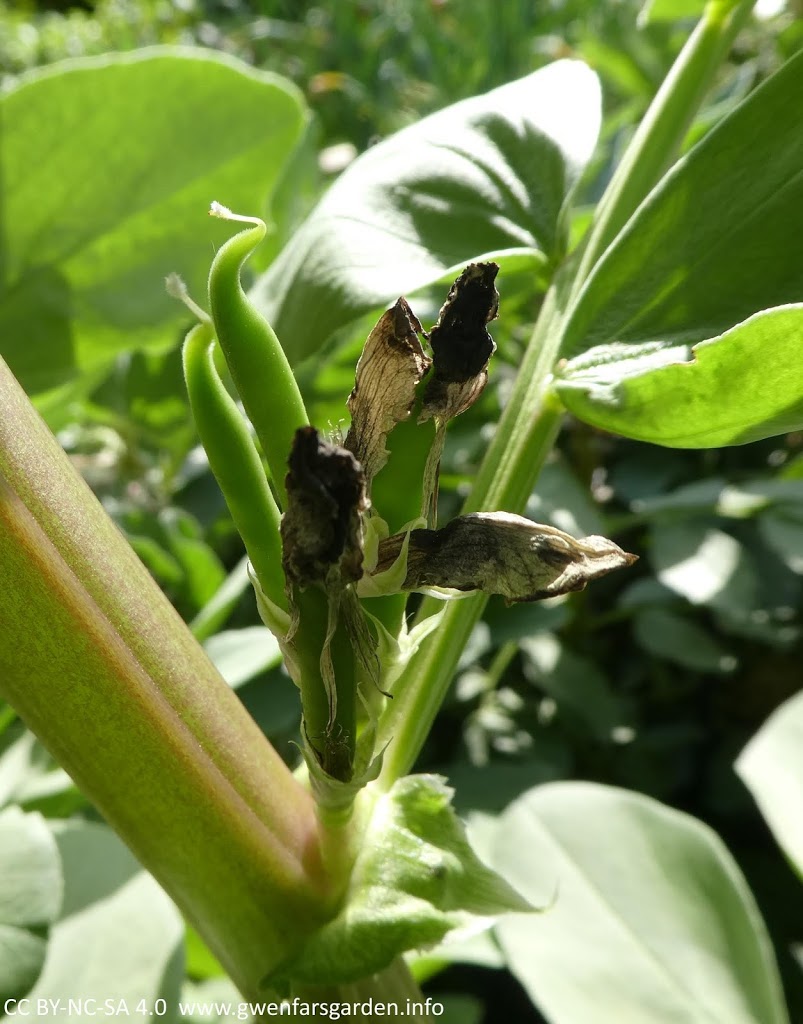
Spray the blackfly
Even with pinching out the tips, the blackfly will most likely still attack the beans, you’ve just slowed down the process. The second line of defence is soapy water, which works by clogging up the pores which insects breathe through, effectively suffocating them. Technically, it can harm all insects, including the good ones. But it dissipates quickly and doesn’t really harm anything which isn’t directly sprayed.
Squeeze some washing up liquid into a sprayer (see pic below) then fill to about 3 quarters. Given it a really good shake so it gets all soapy. Then squirt the soapy water directly onto the blackfly. Be really generous and drown the buggers. Also make sure to spray the undersides of the leaves as they can hid there too.
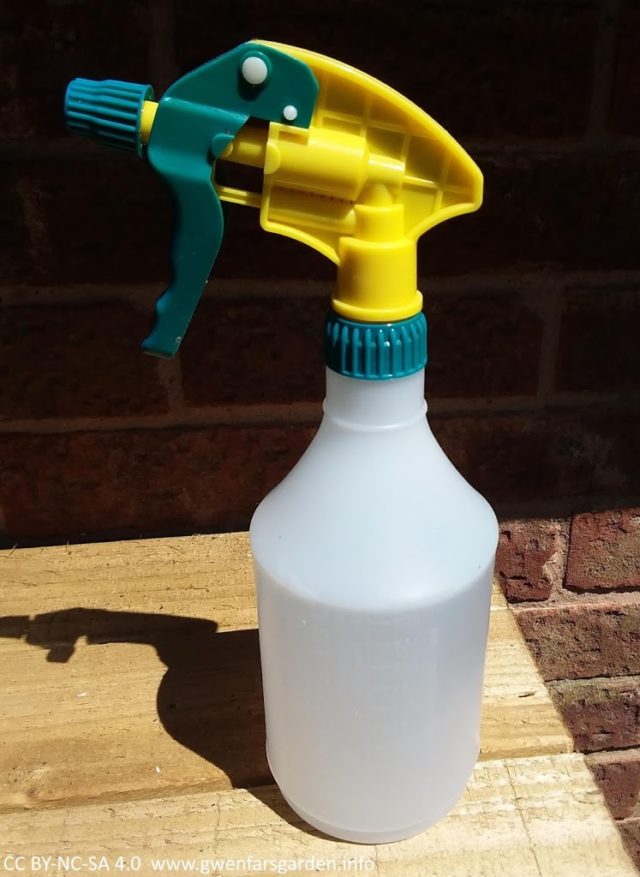
Make a concerted effort of spraying them morning and evening for a few days, and most will eventually be
killed off. A few may hang around, but they will be weakened, and you will have saved most of your crop.
The soapy water won’t hurt good bugs like ladybirds (whose larvae eat blackfly), just the bad bugs like blackfly. In fact, you can also use this solution on greenfly.
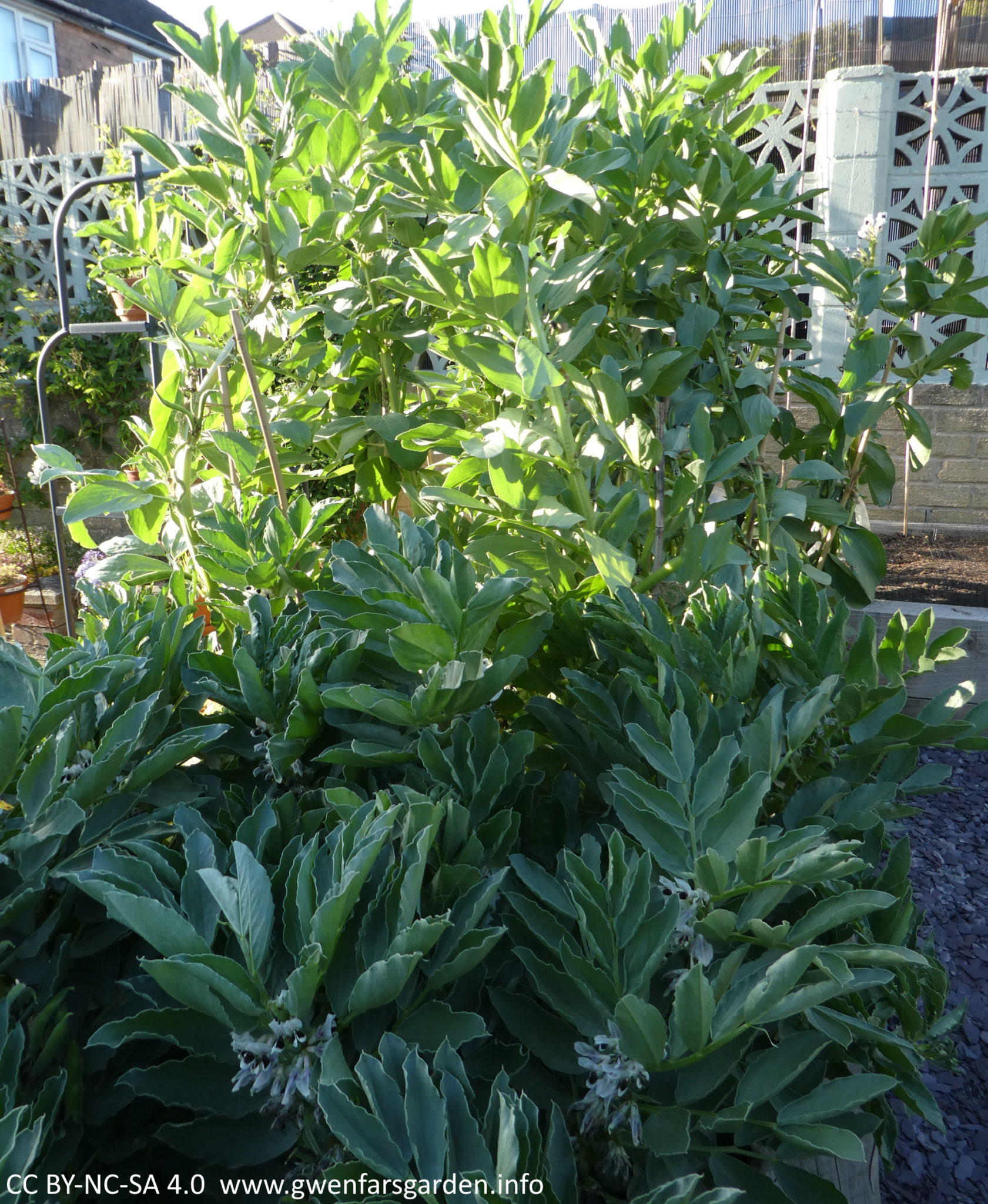
Other options
Other options include ordering some ladybird larvae to be delivered to you, as these dine on blackfly quite voraciously, and they could solve your problem. I have yet to try this, so cannot say how well it works.
Some people use Neem oil for a really bad infestation. It’s apparently effective, but can be hard on the plant and it can kill ‘good’ insects, so best kept for when you need the nuclear option.
Both Neem oil and Aspirin contain high levels of salicylates, the plant hormones involved in boosting pathogen-defending protein production in plants. Salicylic acid is also used by some plants as a signalling mechanism when
they’re under attack. Predatory insects and insect eating birds will follow a trail of salicylic acid, expecting a swarm of aphids or similar. So adding 1 soluble Aspirin to your soapy water is worth trying, and one I will experiment with this year.
An ‘untidy’ garden, particularly for ladybirds to over winter in, to increase their habitat and numbers, can help. Whilst I do this every year, and I’ve created a bug hotel, I’ve still not had much luck with increasing the number of ladybirds in the garden, so I continue to resort to pinching out tips and soapy water.
* * * * *
If you can, try to check your beans daily for blackfly. The sooner you notice and start spraying them, the better chance you have of keeping them under control.
A few days of some dedicated checking and spraying, and you can look forward to eating these!

P.S. Thanks to people on Mastodon (you know who you are) for sharing their experience of using Neem oil and Aspirin. To Alx who said their beans are looking much better after just a few days of the washing up liquid spray suggestion, and Xan for the extra information about how the soapy water works on the blackfly.
I also recommend reading a short post by a gardening professional, Saralimback, about the negative impacts of neem oil on your ecosystem.
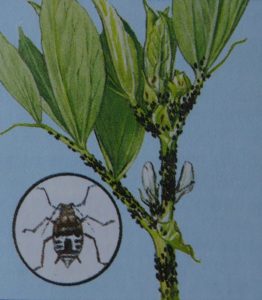
For some reason we have never had a blackfly problem on our broad beans. Oh why did I say that?